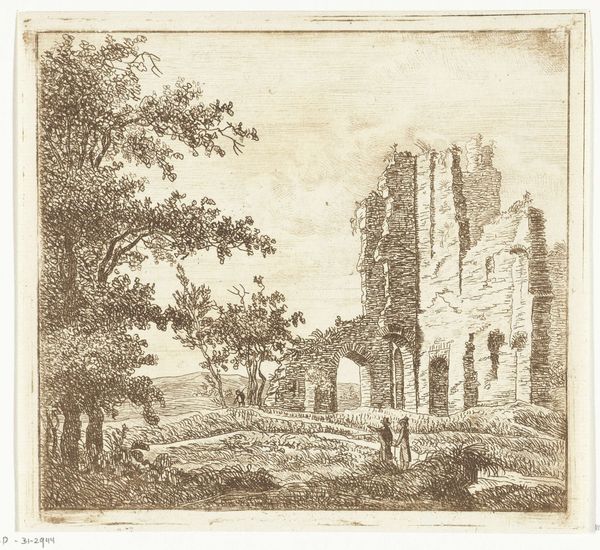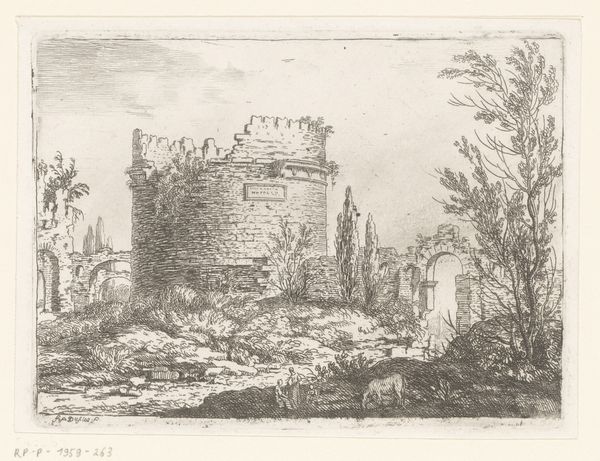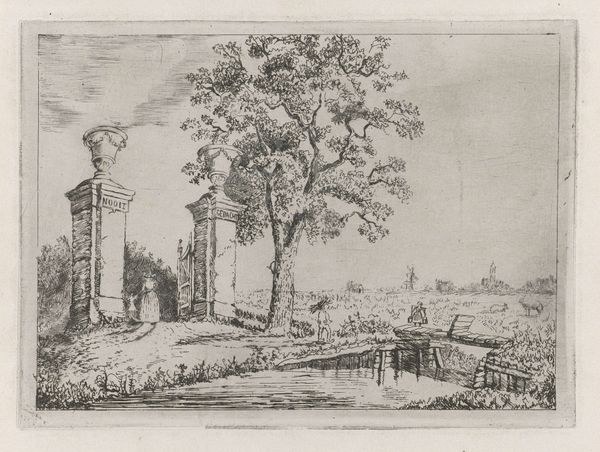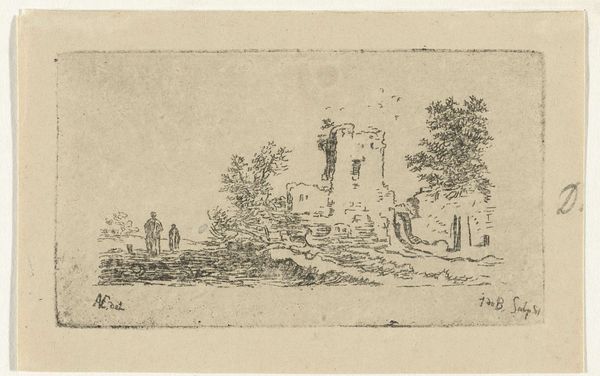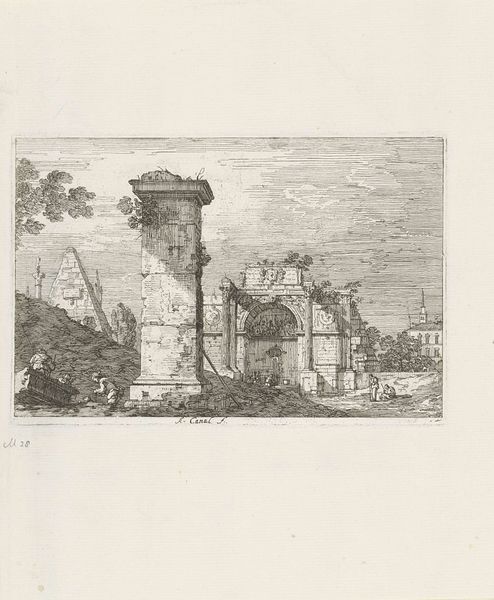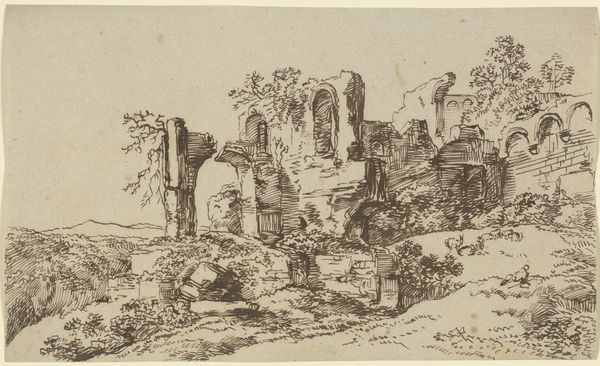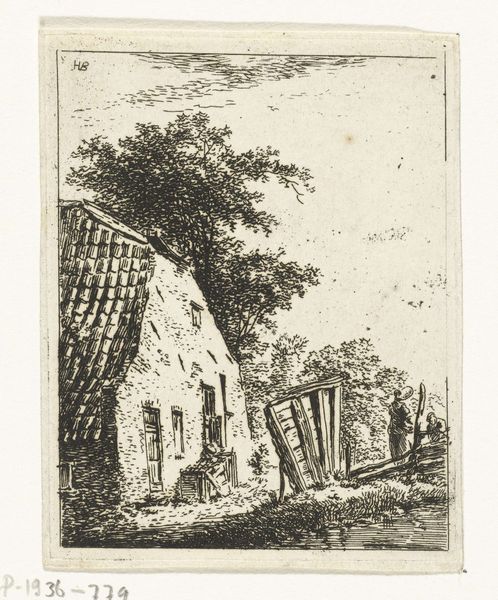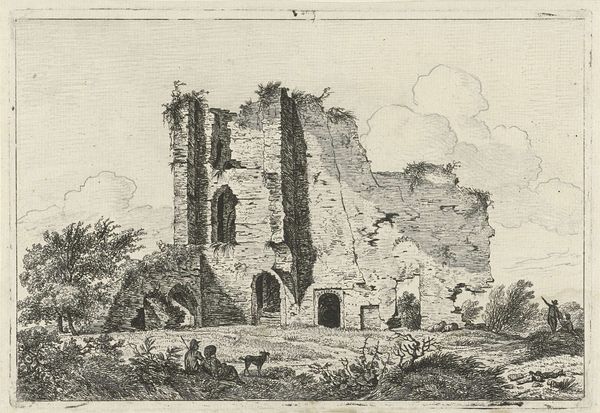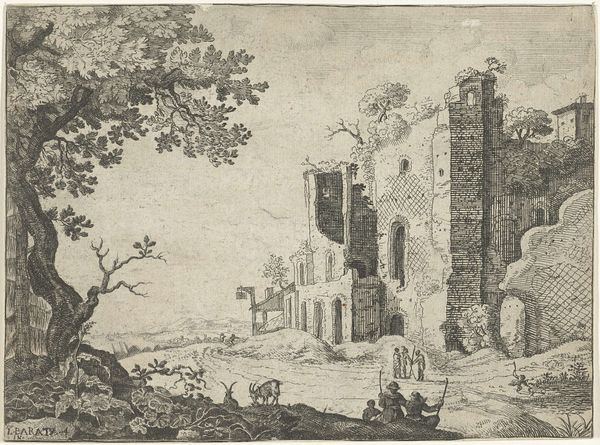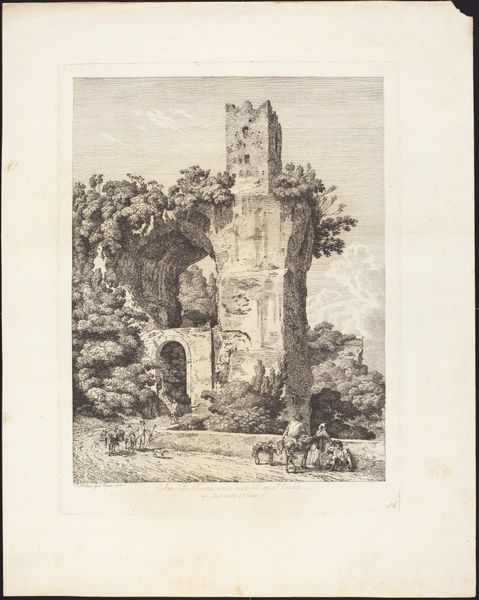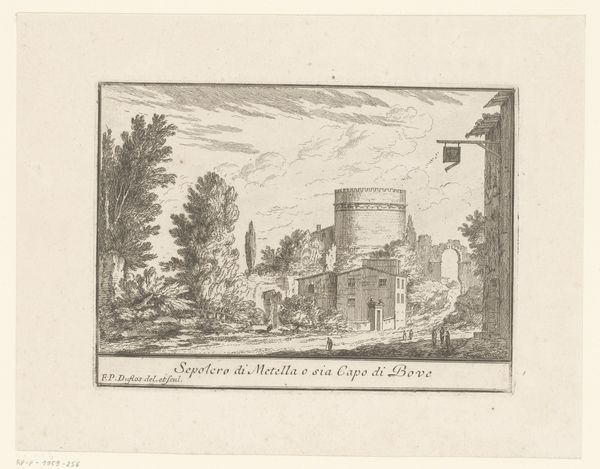
etching
#
etching
#
landscape
#
etching
#
romanticism
Dimensions: height 211 mm, width 147 mm
Copyright: Rijks Museum: Open Domain
Curator: This etching, entitled "Ruïne van een toren," or "Ruin of a Tower," was created by Reinierus Albertus Ludovicus baron van Isendoorn à Blois sometime between 1796 and 1856. Editor: There's a delicate, melancholic quality to the line work that I find compelling. The ruin seems both imposing and fragile against the relatively blank sky. Curator: Etchings of ruins like these were quite popular during the Romantic period. There's a focus on the remnants of human creation succumbing to the power of time and nature. The level of detail, achieved through the etching process itself, provides a very tangible record of the structure's decay. What stories could be extrapolated from those stones, if they could talk. Editor: Absolutely. This work participates in a longer conversation around power, history, and even loss. It is impossible to engage this artwork without thinking about colonial and feudal histories in the low countries. Van Isendoorn à Blois would certainly have felt very differently about feudal power than perhaps someone working today. It is likely that an important patron or a local government provided the initial support that helped this tower be built. Curator: Consider the technical skill needed to render such detail with acid and metal. It invites you to contemplate the relationship between labor, artistic vision, and the physical endurance required to produce such an image. The means of production were drastically different then, impacting both the time and social value ascribed to such artistic production. Editor: It certainly presents the crumbling tower as a symbol ripe for contemplating historical and social upheaval, the inevitable decline of once-dominant structures. This could signify shifts in social power, questioning traditional forms of authority. Curator: Yes, there's definitely an intended sense of nostalgia woven into the detailed rendering of the tower's materials. The etching itself has aged, acquiring its own patina—adding another layer of temporal depth. Editor: It really prompts me to consider whose stories are amplified and whose are silenced when looking at these remnants of the past. Whose labor built that tower, whose lives were touched by its rise and its fall? Curator: Precisely! Considering these physical remnants offers potent starting point for interrogating both the artist's labor and the greater socio-economic conditions under which it was made. Editor: A stark and thought-provoking reminder that even the most imposing structures eventually return to the earth.
Comments
No comments
Be the first to comment and join the conversation on the ultimate creative platform.

